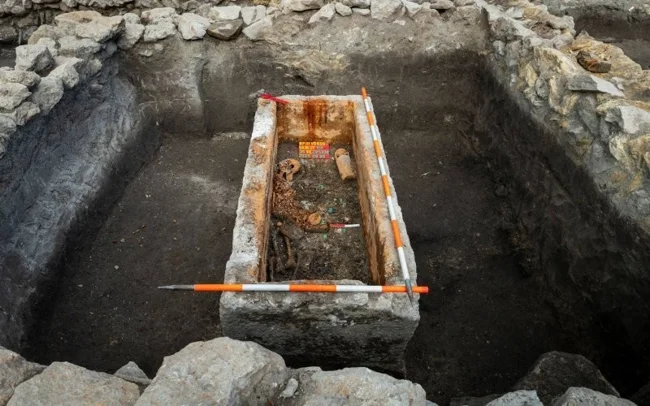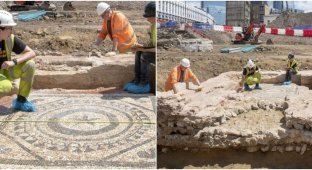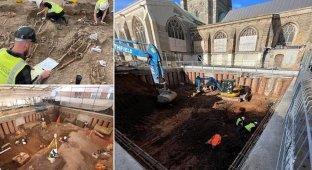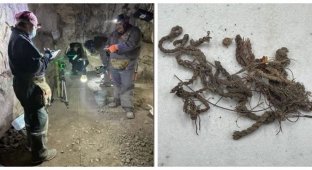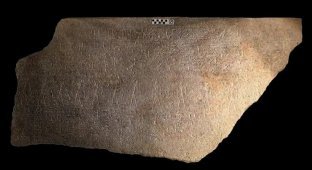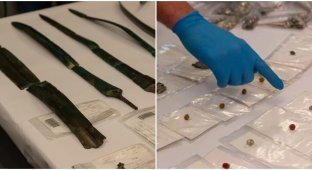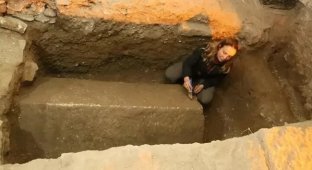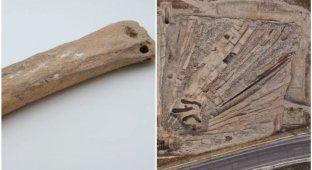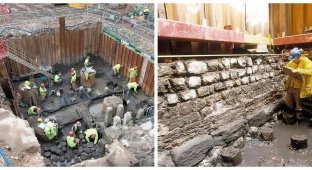Archaeologists opened a 1,700-year-old sealed Roman sarcophagus (6 photos)
A team from the Budapest History Museum discovered a limestone coffin during a major excavation in Óbuda, a northern district of the city. This area was once part of Aquincum, a Roman settlement on the banks of the Danube. Archaeologists removed the lid of a sealed ancient Roman sarcophagus and discovered the preserved remains of a young woman who died 1,700 years ago. 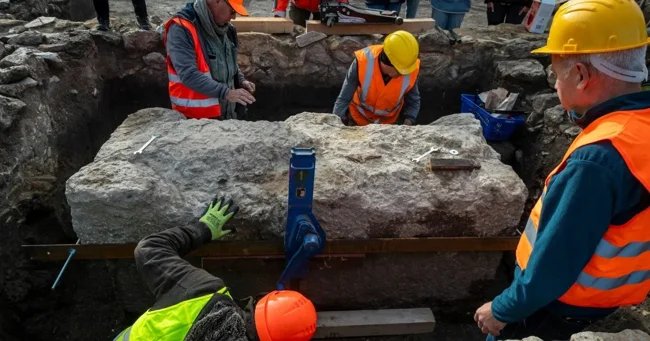
The skeleton was surrounded by artifacts: two intact glass vessels, bronze figurines, and 140 coins. A bone hairpin, an amber ornament, and the remains of gold-embroidered fabric were also found.
Gergeli Kostyal, a specialist in the ancient Roman period and one of the project's leaders, noted that the deceased was a wealthy individual or held a high social status.
"It's rare to find an intact sarcophagus. In the fourth century, it was common to reuse old tombs," he explained. 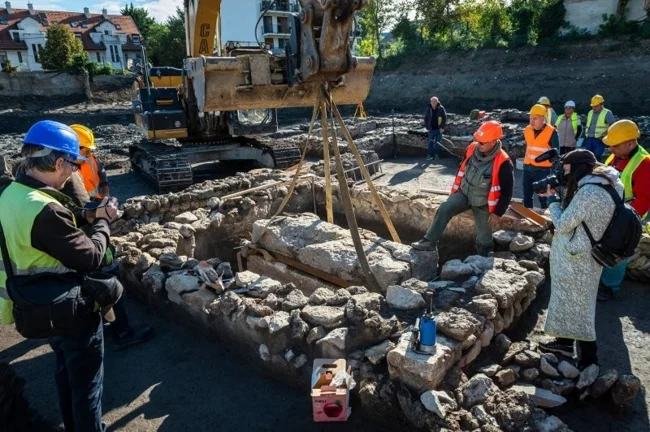
Anthropologists are now examining the young woman's remains, hoping to learn more about her age, health, and origins. However, the grave's location and the items found already provide important clues.
The sarcophagus was discovered among the ruins of abandoned houses in the Aquincum quarter. Nearby, archaeologists found a Roman aqueduct and eight other burials, but none of them compare to the sealed tomb in richness and state of preservation.
A layer of dirt approximately 4 cm thick was removed from inside the sarcophagus. Experts hope it may contain further treasures. 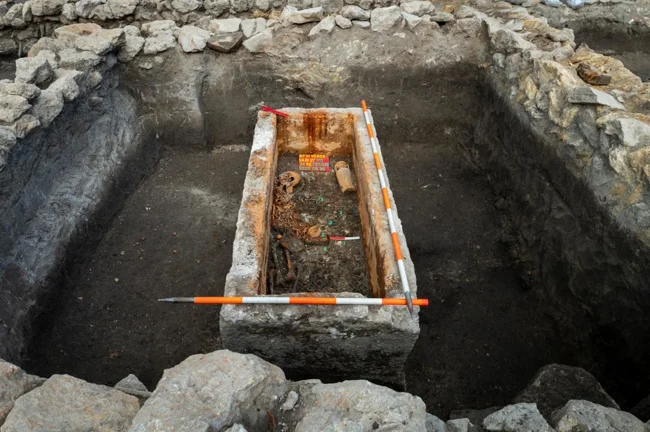
"We haven't yet found any earrings or other jewelry belonging to the woman, so I hope small items will be found while sifting the soil," said Gabriella Fengyesh, the excavation's lead archaeologist.
"I was touched by the genuine care and love we saw," she said. "I can't imagine how difficult it was for people to bury this young lady."
The Danube was an important border for the Roman Empire, marking the boundaries of its northern territories.
Starting in the 1st century BC, Rome began building military camps and settlements along this river to protect its lands from raids by Germanic and Dacian tribes. 
The city of Aquincum, now part of Budapest, became an important Roman outpost and administrative center. Forts, baths, and public buildings were erected here.
Roman legions stationed along the Danube built roads, bridges, and fortifications. These structures facilitated trade, troop mobility, and cultural exchange. 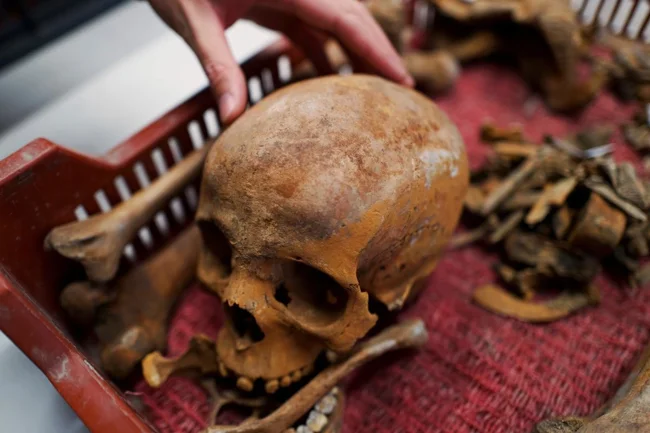
Archaeological finds in the region reveal a vibrant community. Mosaics, ceramics, coins, and inscriptions reflect both Roman influence and local traditions.
Aquincum's strategic location on the river allowed Rome to expand its influence across Central Europe. Even after the empire's fall in the 4th and 5th centuries, the remains of these settlements continued to shape the region's history, leaving a rich legacy of Roman architecture and traditions. 